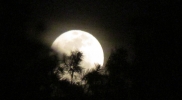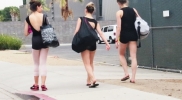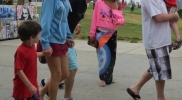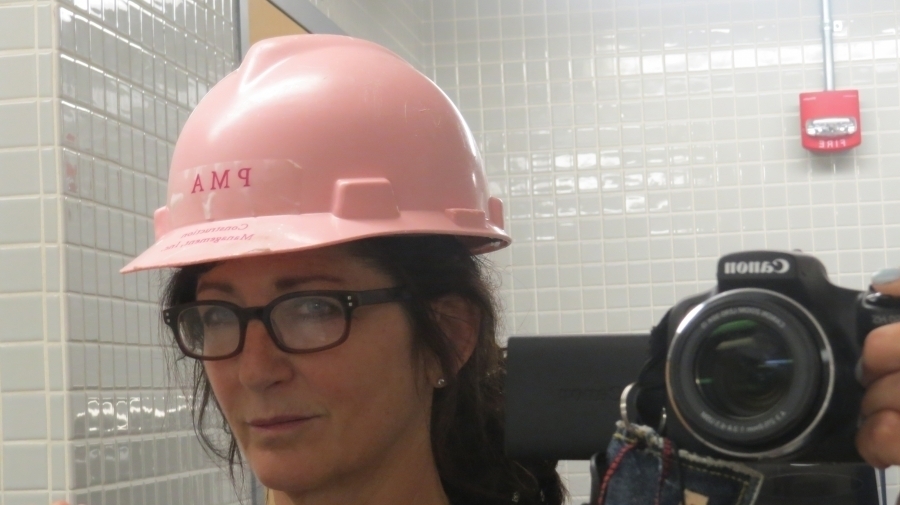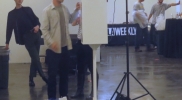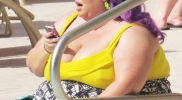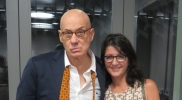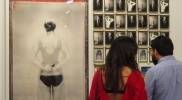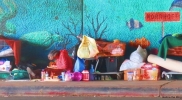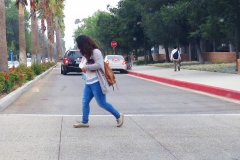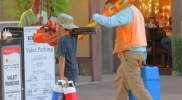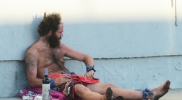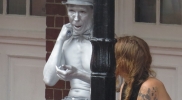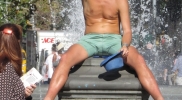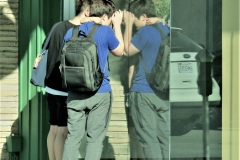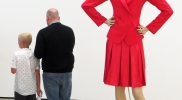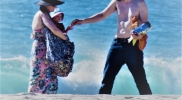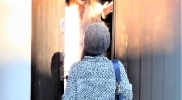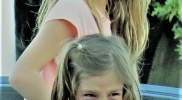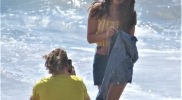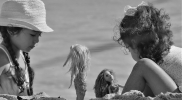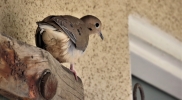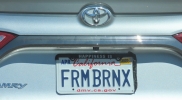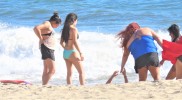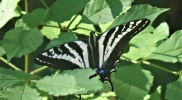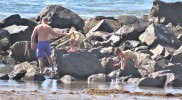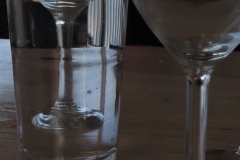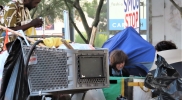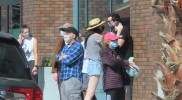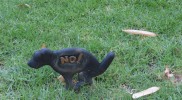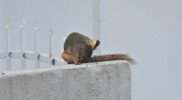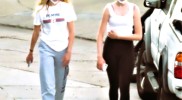|
|
Best Trivia - Art
|
Favorite Trivia – ART
|
| “‘I think Picasso hated women,’ she said, standing in front of a Cubist painting. ‘Look how she’s all chopped up. That’s not someone who likes women.'”
Jennifer Coburn – A Paris All Your Own: Bestselling Women Writers on the City of Light (ed. Eleanor Brown)
|
|
Bauhaus artist Paul Klee considered a line to be one of the atomic elements of art and architecture. He famously described a line drawing as “a dot that went for a walk.”
|
|
“Bonnard was arrested in the Paris Museum of Modern Art for touching up his own pastels on display there.”
Eight American Poets (ed. by Joel Connarroe)
|
|
Classic art student exercise: Pretend to be an ant crawling over an object, slowly observing every detail.
Diane Ackerman – Cultivating Delight
|
| Painter Toulouse-Lautrec kept a well-stocked bar at his studio as he felt it essential to offer his guests an infinite variety of cocktails for the purpose of the proper contemplation of a painting.
Toulouse-Lautrec & Maurice Joyant – Intro to Art of Cuisine
|
|
“It is to be hoped that common-sense, in the time to come, will prefer deciding upon a work of art rather by the impression it makes, by the effect it produces, than by the time it took to produce the effect, or by the amount of ‘sustained effort’ which had been found necessary in effecting the impression.”
Edgar Allan Poe – Poe’s Poetical Works:The Poetic Principle
|
|
abstract art: “The kind where you are not distracted by reality.”
Webster’s Unafraid Dictionary: Defiant Definitive Put-Downs – Leonard Louis Levinson
|
| “Art is a lie that makes us realize truth.”
Picasso
|
 |
| Johnny asked me, “What is art?” “What isn’t?” I replied.
Patty Martino Alspaugh
|
| “Every artist writes his own autobiography.”
Havelock Ellis
|
| “So perhaps, in a way, I am ready for a move to Los Angeles, where I find the environment abrasive, where I will be forced to turn inward, to make things and do things. I have often thought that is why New York and Los Angeles are centers of creative activity—you want to go inside, out of the traffic, the smog, the heat, the dog shit, into your studio, your office, your apartment, and make something.” [September 23, 1980 – Napa Valley]
Eleanor Coppola – Ariadne’s Thread
|
| “Picasso once said that if they put him in jail and took away all his paints, he would draw with his spit on the prison walls.”
Paul Monette – Borrowed Time: An AIDS Memoir
|
| “. . . you need to keep a pipeline open to your imagination The richer the art and literature that you pump into that pipeline, the better that project will be.”
Peter Coyote – The Books That Changed My Life (ed. by Bethanne Patrick)
|
| “You care about things you make, and that makes it easier to care about things that other people make.”
Louis Menand
|
| “After a late lunch we walked to the Van Gogh Museum . . . I can hear my art teacher, Sister Magdalene Mary: ‘You go to see art because it makes you want to do your own.’” [February 26, 1998]
Eleanor Coppola – Notes On A Life
|
| “The mind is omnipresent, events in life never happen alone and the history is forever increasing its volume. The natural state of life and mind is complexity. At this point, what art can offer (if it can at all – to me it seems) is an absence of complexity, a vacuum through which you are led to a state of complete relaxation of mind. After that you may return to the complexity of life again, it may not be the same, or it may be, or you may never return, but that is your problem. . . I think it is nice to abandon what you have as much as possible, as many mental possessions as the physical ones, as they clutter your mind. It is nice to maintain poverty of environment, sound, thinking and belief. It is nice to keep oneself small, like a grain of rice, instead of expanding. Make yourself dispensable, like paper. See little, hear little, and think little.”
Yoko Ono – Grapefruit
|
| “Went to the new museum way downtown. It was an automobile show. Real cars mixed in with Matisses and Rosenquists. And they had a painting of mine in it that they had labeled a “Car Crash.” But when I saw it, it wasn’t a Car Crash it was a Disaster. The one with the fireman. Should I tell them? How could they not even notice it didn’t have a car in it. And the show’s going on to Detroit. In Detroit they’ll notice there’s no car. But really, should I tell them?” [January 5, 1985]
The Andy Warhol Diaries
|
|
“The artist appeals to that part of our being which isn’t dependent on wisdom. . . He speaks to our capacity for delight and wonder, to the sense of mystery surrounding our lives; to our sense of pity, and beauty, and pain.”
Joseph Conrad, Preface to The Nigger of the Narcissus (Christopher Morley’s Book of Days for 1931 [March 19])
|
| “Every child is an artist. The problem is how to remain an artist once he grows up.”
Pablo Picasso
|
| “Today I found the signature of Vermeer, the word ‘Meer,’ on the picture called Woman and Servant in the Frick Collection. I’ve already found it on my picture The Geographer. I know of undiscovered signatures on other Vermeers. In the Frick picture it is high up and to the left of the jewel casket.”
René Gimpel – Diary of an Art Dealer
|
| “The artist, like the God of the creation, remains within or behind or beyond or above his handiwork, invisible, refined out of existence, indifferent, paring his fingernails.”
James Joyce – A Portrait of the Artist As a Young Man
|
|

|
| “Genius, in art, consists in knowing how far we may go too far.”
Jean Cocteau
|
|
“He who has loved and served an art is like the child that was nursed by Persephone: he is not subject to the woes of other men, for he has lain in the lap and on the bosom of a goddess.”
Anonymous (Christopher Morley’s Book of Days for 1931 [March 3])
|
| “Jo picked up a handful of spaghetti and hurled it at the wall to see if it would stick, but it slithered slowly down to join the rest of the garbage on the floor. ‘There, you see, it’s not ready yet—it reminds me a bit of the way old Jack Bilbo did his paintings, remember?’ ‘That’s right,’ Gerhardt said. ‘He used to cover the canvas with glue and then stand back and chuck things at it. Old French letters, rusty razor blades, burnt sausages, fag ends—if they stuck it was a collage, if they fell off—oh well, it all helped to mess the paint around. God, if he could be an artist, anyone could!’” [February 2, 1940]
Joan Wyndham – Love Lessons: A Wartime Diary
|
| “The infallible sign that something is not art, or that somebody does not understand art, is boredom. It is as forceful as pleasure is elsewhere. Art should be a means of instruction, but its aim is pleasure.” [December 28, 1952]
Bertolt Brecht Journals, 1934-1955
|
| Self-consciousness is the enemy of all art, be it acting, writing, painting, or living itself, which is the greatest art of all.”
Ray Bradbury – Zen in the Art of Writing
|
| “Visited Madame Didier in the evening; her portrait bust of me is coming along. During the process, I had a feeling of Promethean emergence into being, like a demiurge. It is an uncanny sensation, especially the kneading, stoking motion that conjures the material into form. Artists are closest to the great creative energies of the world. It is their symbols deposited in the graves and rubble of the earth that bear witness to life that once pulsed with vitality.” [May 23, 1944]
Ernst Jünger – A German Officer In Occupied Paris: The War Journals, 1941-1945
|
|
heirloom: “Something old nobody liked well enough to wear out.” – anon
Webster’s Unafraid Dictionary: Defiant Definitive Put-Downs – Leonard Louis Levinson
|
| “Every act of creation is first of all an act of destruction.”
Pablo Picasso
|
| “…up the coast to Seattle to spend Thanksgiving with my brother and his 5-yr old daughter who likes to take Mr. Potato Head and put the body parts into all the wrong places because ‘that’s what Picasso would do . . .'”
Heather B. Armstrong – Dear Los Angeles
|
| “[André] Breton was a founder of the artistic movement known as Surrealism, which arose in Europe after World War I. Inspired by Sigmund Freud’s exploration of the unconscious, the Surrealists wanted to see what would emerge from their brushes and pens if they let ideas pour dreamlike from their minds. . . Surrealists strived, Breton said, ‘to present interior reality and exterior reality as two elements in the process of unification, of finally becoming one.'”
Catherine Reef – Frida & Diego: Art, Love, Life
|
| “… lack of training was the ruin of more talented beginners than talented beginners were ruined by training… Mary Cassatt would not have begun to attract the attention of Degas in the Paris Salon, as she did attract it, if she had not known the grammar of art and its vocabulary: how to set up a figure anatomically, how to draw accurately, in perspective and foreshortening, how to choose, mix, and apply paint, how to prepare canvas, handle charcoal and pastel…”
Nancy Hale – Mary Cassatt
|
| “The dream of art is not to assert what is already known but to illuminate what has been hidden.”
Louise Glück – Proofs & Theories: Essays on Poetry
|
| “Art is an increase of life, a sort of competition of surprises that stimulates our consciousness and keeps it from becoming somnolent.”
Gaston Bachelard – The Poetics of Space
|
| “At sixteen and a half and having just been rejected by the two art schools to which he had applied, [Jules] Feiffer screwed up his courage, and, without an appointment, knocked on [Will] Eisner’s studio door and talked his way into an apprenticeship. The experience proved to be transformative, especially after Eisner, who had bluntly told the teen aspirant at their first meeting that his sample drawings ‘stank,’ discovered Feiffer’s writing talent. Eisner eventually entrusted Feiffer with the writing of entire Spirit story sequences and, in lieu of a raise, gave him a page in the Sunday supplement on which to launch a strip of his own, called Clifford.”
Norton Juster – The Annotated Phantom Tollbooth (Illustrated by Jules Feiffer; Annotations by Leonard S. Marcus)
|
| “Even more than technical innovations, like pointillism; even more than that blaze of painted light, the Impressionists’ answer to the challenge of the world’s mystery was their subject matter. They painted the radiance in ordinary life. Once more artists were looking at what was right in front of them when everybody else was looking past or over it. They painted the blithe side of reality—the beach with its holiday-makers, bathing-machines, and rakish ships at sea, or a boating picnic beside the river of simple souls like themselves—and its dark side, too: prostitution, absinthe, and despair. The public, dedicated solemnly to the status quo, wanted to be shown the world’s glories, its allegorical significance, not its reality… “If Impressionist art could be nailed down to its most salient feature—of course it is impossible ever to nail art down—it might be the radiant knowledge that the object, in a different light, becomes a different object; which dawns also on the viewer of the pictures.”
Nancy Hale – Mary Cassatt
|
| “A man that has a taste of musick, painting, or architecture, is like one that has another sense, when compared with such as have no relish of those arts.”
Joseph Addison – The Spectator, No. 93, June 16, 1711
|
| “… diagonals constitute one of the main influences of Japanese art on almost every one of the Impressionists. Back in 1856 the painter Félix Bracquemond, friend of Degas, discovered a little volume of Hokusai prints that had been used as part of the packing material in a crate from Japan. Through this friend, Degas first met and was conquered by ‘Japonism’… The Japanese influence changed the whole face of art… Pissarro, Monet, and Degas all, to varying degrees, changed their ideas of composition after seeing the Japanese prints—incorporating the off-center arrangements, the modulated, varying line, the dramatic foreshortenings with the model seen from directly above, or from below, or some other surprising angle. These three painters did not, like Whistler, use actual Japanese elements except on occasion. They simply allowed their whole way of seeing to be revised. Through their eyes, the world’s seeing was revised too… Mary Cassatt was greatly affected. Her paintings were; and especially her etchings, aquatints, and dry points.”
Nancy Hale – Mary Cassatt
|
| “Mrs. Montgomery Sears took her [Mary Cassatt] to an ‘evening’ at the home of Gertrude Stein, who, being also from Allegheny City, wanted to know Mary. However, after Mary met a number of Miss Stein’s and Leo’s friends and looked at their array of early Picassos and Matisses, she went back to Mrs. Sears expressing total rejection for her host and hostess. ‘I have never in my life seen so many dreadful paintings in one place,’ she said, ‘I have never seen so many dreadful people gathered together, and I want to be taken home.'”
Nancy Hale – Mary Cassatt
|
| “You never feel stuffy in a Japanese house: no heavy walls, just thick paper and sliding light wood partitions. Instead of cluttering up the place with heavy bric-a-brac and pictures that one tires so of seeing, they keep their lovely art objects hidden away. When a friend calls they take them out, unwrap them, and admire them together, carefully and lovingly. Then they put them away again, so the room is always in beautiful simplicity.”
Maude Parrish – Nine Pounds of Luggage
|
| “Schopenhauer believed we could transcend the will through artistic creation and contemplation. We can lose ourselves, and drown our wills, by absorption in making and appreciating works of art, a process whereby the perceiver and perceived become one.”
Geary – The World in a Phrase: A Brief History of the Aphorism
|
‘But he was home,’ Rauschenberg later recalled. ‘And after a few awkward moments, I told him what I had in mind.’
What Rauschenberg wanted was one of de Kooning’s drawings. By itself, the request wasn’t surprising—artists in the same circles often traded works, and the two of them were already friendly after meeting at Black Mountain College a year earlier. But the younger artist didn’t want to hang the sketch on the wall of his studio. No, Rauschenberg explained, he wanted to erase it.
It was a radical request. By 1953, when Rauschenberg arrived on his doorstep, de Kooning was the most celebrated modern artist in New York City. Other artists admired him for his unparalleled draftsmanship; collectors were snapping up his paintings for unprecedented sums… In short, a de Kooning was worth something. Even a throwaway sketch had value, both monetary and art historical—and for Rauschenberg, that was key. “It had to be something by someone who everybody agreed was great,” he explained to Calvin Tomkins for a 1964 New Yorker profile,
Before he approached the venerated, however, Rauschenberg had experimented with erasure by wiping out his own drawings. But he found it unsatisfactory. ‘If it was my own work being erased, then the erasing would only be half the process, and I wanted it to be the whole,’ he said.
De Kooning was, unsurprisingly, less than enthused at the request. ‘I remember that the idea of destruction kept coming into the conversation, and I kept trying to show that it wouldn’t be destruction,’ said Rauschenberg, ‘although there was always the chance that if it didn’t work out there would be a terrible waste.’ As the younger artist further elucidated his intentions over glasses of whiskey, de Kooning relented.
But the painter wasn’t going to make it easy. As Rauschenberg tells it, de Kooning pulled out a portfolio and began flipping through the contents. Just as he seemed to settle on one, he paused. ‘No,’ the artist mused, ‘it has to be something I’d miss.’ So he pulled out a second folder, finally landing on a sketch made with a combination of grease pencil, ink, charcoal, and graphite.
Later, Rauschenberg couldn’t recall precisely what the drawing looked like. (In 2010, SFMOMA enhanced an infrared scan of the work that revealed several female figures from different angles.) What he did remember was how long the process took: two months, ‘and even then it wasn’t completely erased,’ he said. I wore out a lot of erasers.’
The result? A blank sheet of paper bearing a few smudges of its former image. It wasn’t until late 1955, when Rauschenberg was scrounging for submissions to a group drawing show, that his friend Jasper Johns suggested he frame the work. Using a duplication machine he had access to through a job designing department store window displays, Johns printed the accompanying inscription:
ERASED de KOONING DRAWING
ROBERT RAUSCHENBERG
1953
When it went on view at New York’s Elinor Poindexter Gallery, there was no fanfare. No reviews of the show mentioned Erased de Kooning Drawing. But the story spread through the art world anyway. ‘You heard of it by word of mouth,’ Steinberg recalled.
|

Comments are closed.
|
|


